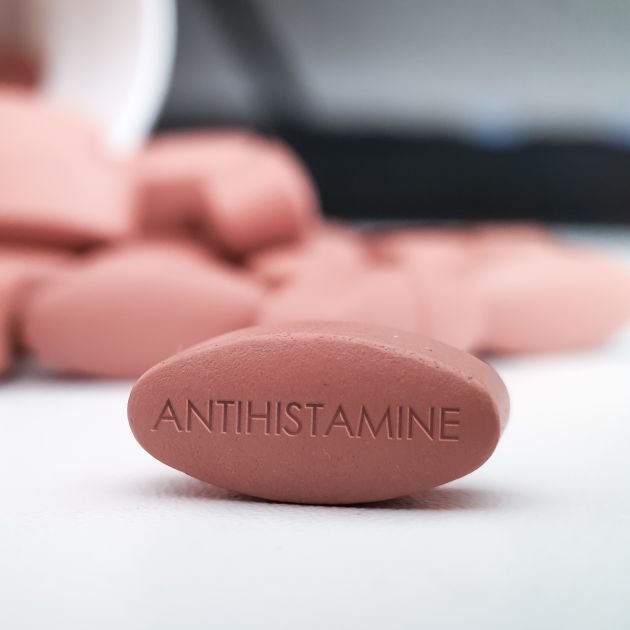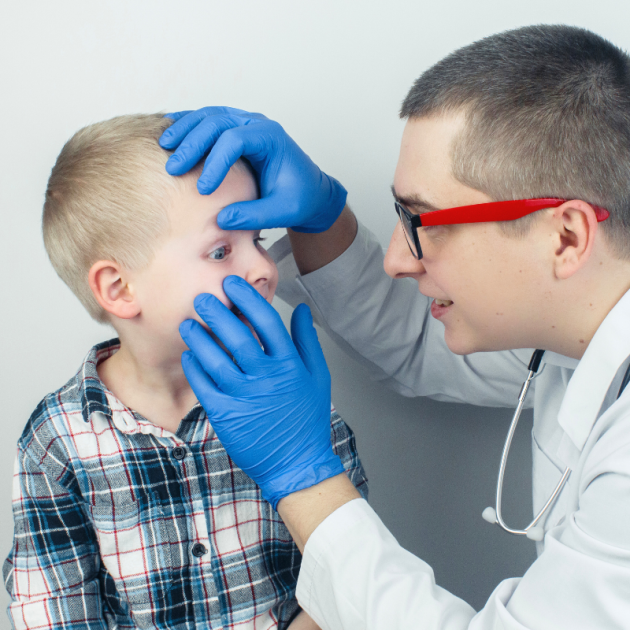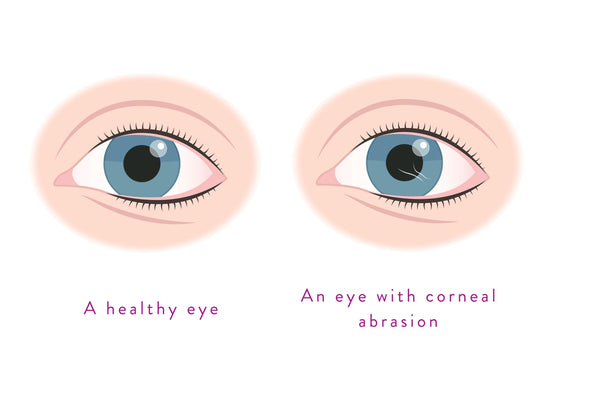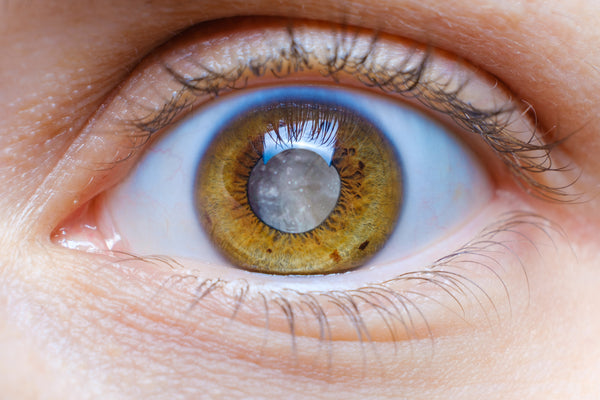
What is conjunctivitis?
Conjunctivitis, also known as pink eye, is an inflammation of the conjunctiva (the clear jelly-like layer over the surface of your eyes).
It can affect just one or both of your eyes and can be caused by a wide range of different things including viruses, bacteria or even allergies. The condition is temporary and usually clears up within 2–3 weeks depending on the cause. Treatments also vary depending on the cause.
Symptoms
The symptoms of conjunctivitis vary depending on the underlying cause, and you may experience a combination of different symptoms.
Common symptoms of conjunctivitis include:
- Increased tear production
- Feeling like a foreign body is in the eye(s) or an urge to rub the eye(s)
- Itching
- Irritation and/or burning
- Pink or red colour in the white of the eye(s)
- Swelling of the conjunctiva
- Discharge (pus or mucus)
- Crusting of eyelids or lashes, especially in the morning
- Contact lenses that feel uncomfortable and/or do not stay in place on the eye
Causes
Although you may be familiar with pink eye and conjunctivitis, you may not know that there can be multiple causes. From viruses to irritation from foreign objects to allergies, there are multiple different causes for the condition.

Viral conjunctivitis
Viral conjunctivitis is the most common type. It’s usually caused by the adenovirus, although other viruses can also cause it, and is most commonly seen in adults.
This type of conjunctivitis usually starts off in one eye but may spread to the other within a couple of days. It can occur alongside the symptoms of a cold, flu, or other respiratory infection. The eye discharge of viral conjunctivitis is usually thin and watery rather than thick or sticky.
Viral conjunctivitis is contagious and easily transmitted between eyes and from person to person.

Bacterial conjunctivitis
Bacterial conjunctivitis can be caused by a number of different bacterias getting into your eye. You’re more likely to experience a pus-like discharge and your eyelashes or eyelids might get crusty or stuck together, especially first thing in the morning.
Bacterial conjunctivitis is contagious and can be passed from person to person and to your other eye if it only affects one.

Allergic conjunctivitis
Usually occurring in both eyes, allergic conjunctivitis is in reaction to allergies. Those who suffer from hayfever are usually familiar with this but it can happen if you touch your eye after touching something you’re allergic to such as a pet or food allergen.
This type of conjunctivitis usually produces intense itching, swelling, and watery eyes and can accompany other symptoms common with allergies like an itchy nose, sneezing, scratchy throat or asthma. It is not contagious.
Conjunctivitis caused by irritants
This type of pink eye is caused by irritants coming into contact with our eye. These can be things such as shampoo or chlorinated water, dust, or a loose eyelash rubbing against the eye. It’s also known as irritant conjunctivitis and is not contagious.
Diagnosis
If you’re experiencing symptoms of conjunctivitis, it’s recommended to see an optometrist, your GP, or a pharmacist. They will ask you some questions and take a look in your eyes to determine whether you have conjunctivitis and the next steps you need to take.
Treatment
Treatment options will depend on the cause of your conjunctivitis. If it is caused by an infection, you can expect your condition to get better in around 2-3 weeks. However, allergic conjunctivitis can be more long term.
Home remedies for conjunctivitis
There are some simple home remedies you can do to help ease your conjunctivitis – these are a good first step in tackling the condition and help you feel more comfortable.
- Avoid wearing your contact lenses – If you wear contacts, they can irritate your eyes further. So avoid wearing them while you have symptoms and opt for your glasses instead until your symptoms have cleared up.
- Use lubricating or moisturising eye drops to help soothe your eyes.
- If your eyelids are sticky or crusty, wipe them clean with some cotton pads soaked in warm water that is cooled from boiling.
- Use cool compresses – A soft, clean cloth or cotton pads soaked in cool water can help to sooth itching, interrupt histamine production (ideal for allergic conjunctivitis), and reduce swelling.

Antibiotic eye drops
You may be prescribed antibiotic eye drops if you have a severe case of bacterial conjunctivitis. Your doctor will make sure that they’re balanced against the risk of antimicrobial resistance and you will be given specific instructions to follow for the full course of eye drops.
Eye drops for conjunctivitis
Your local pharmacy will sell a variety of different eye drops that can be used to soothe symptoms of conjunctivitis. Speak to the pharmacist to find the right drops for you.

Antihistamines
Allergic conjunctivitis can be eased by the regular use of antihistamines which can be easily purchased from any pharmacy. If this doesn’t help, consult your optometrist who will be able to recommend suitable eye drops or refer you to a GP depending on your symptoms and severity.
Moisturising eye drops
Irritant conjunctivitis can be caused by debris in the eye but can also be caused by dry eye syndrome – a condition where your eyes stop producing tears of sufficient quality or quantity. Moisturising eye drops can help to lubricate your eyes and prevent your conjunctiva from becoming irritated.

Treatment for conjunctivitis in children
If your child has allergic conjunctivitis, their doctor may prescribe antihistamines to help reduce symptoms. These can take the form of pills, liquid, or eye drops. Painkillers such as ibuprofen may also be given to help ease their discomfort.
If the conjunctivitis is bacterial, they may be prescribed antibiotics to treat the infection. Young babies and children can develop blocked tear ducts, which can lead to red, watery eyes and cause conjunctivitis which can be treated with a course of antibiotics.
Prevention
Conjunctivitis is itchy, uncomfortable, and can also be painful depending on how severe it is. So prevention is key to not contracting it but also to ensure you minimise the spread to others.
- Don’t touch or rub your eyes.
- Don’t share makeup or cosmetics with other people.
- Regularly wash your hands with warm soapy water, especially after using the toilet.
- Don’t share flannels, face towels, or pillows with others – and regularly clean the ones you do use.
- Practise good eye hygiene by using eyelid wipes or cooled boiled water and cotton pads. Doing this can help to remove discharge and pollen from around your eyes which might be contributing to allergic conjunctivitis.
- If you wear contact lenses, get in touch with your optometrist or contact lens optician for advice.
Takeaway
A common but uncomfortable condition, conjunctivitis rarely lasts longer than around 3 weeks. Bacterial and viral conjunctivitis are highly contagious so make sure you are taking the correct measures to protect your family, friends, and co-workers from being at risk of catching it.
Keeping on top of good eye hygiene is a great way to prevent yourself from catching it and stop it from spreading. But if you do find yourself with itchy, red, and swollen eyes with discharge or pus, there are easily available treatments to help. If you suspect you have conjunctivitis, reach out to your local Leightons optometrist for advice.







